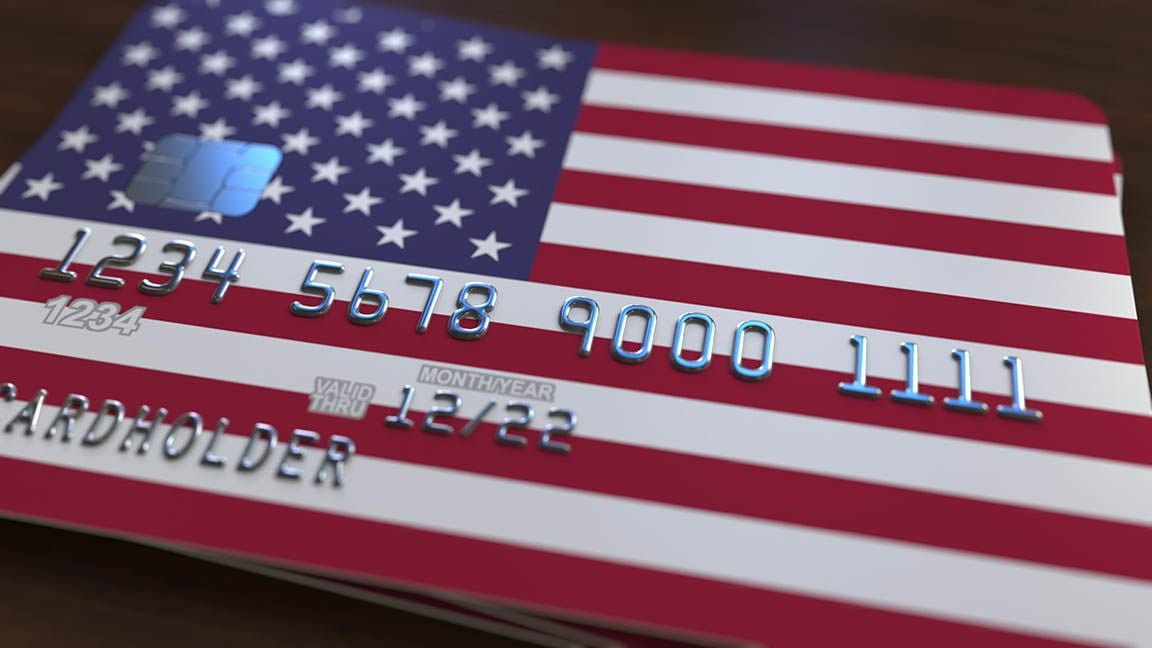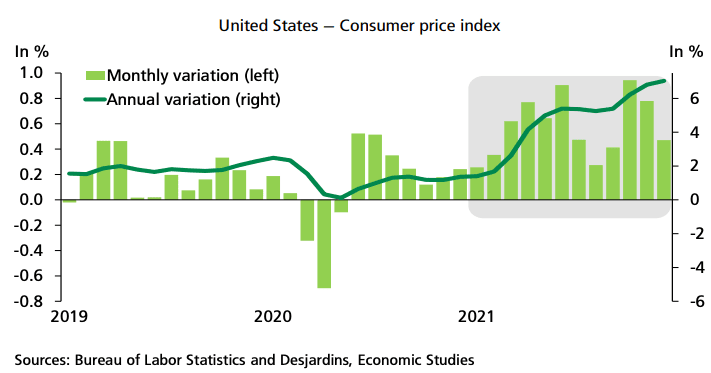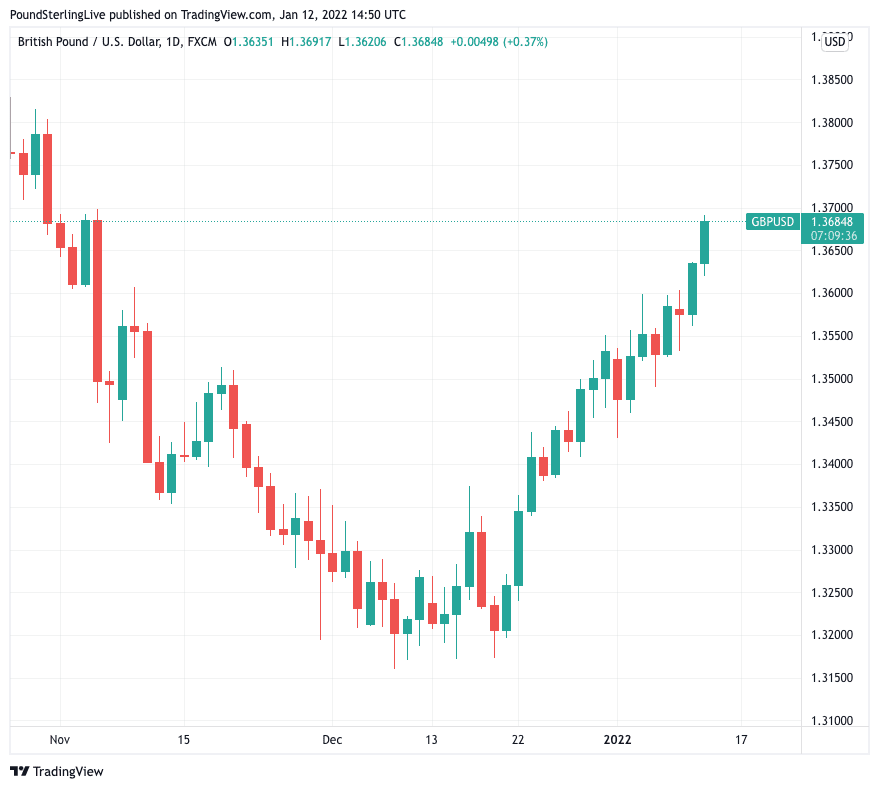Pound / Dollar Jumps 0.50% in Wake of Scorching U.S. Inflation Data
- Written by: Gary Howes
-
- U.S. inflation at highest since 1982
- But USD falls
- Extends post-Powell declines
- But CIBC says the USD will still rise in 2022

Image © Adobe Images
The Pound to Dollar exchange rate jumped half a percent and reached its highest level since November 04 after the U.S. Dollar extended a run of losses following the release of U.S. inflation data.
U.S. inflation for December registered 7.0% year-on-year growth, which was in line with analyst expectations but nevertheless represented the highest reading since 1982.
"The dollar fell after U.S. consumer inflation rose broadly in line with market expectations, keeping intact a highly hawkish outlook for Fed policy. Monthly consumer prices slowed in December to a 0.5% increase, down from November’s 0.8% jump, says Joe Manimbo, Senior Market Analyst at Western Union Business Solutions.
Other key elements of the inflation report showed:
- The index for all items less food and energy rose 0.6% in December
- The all items index rose 7.0% year-on-year in December
- Core inflation was up from 4.9% to 5.5%
The Pound to Dollar exchange rate rose to a high of 1.3689 in the wake of the data amidst a broad based sell-off in the Greenback. The Euro-Dollar exchange rate rose to 1.14, putting it towards the top end of a December-January range.
Secure a retail exchange rate that is between 3-5% stronger than offered by leading banks, learn more.
The inflation data justifies the intention of the U.S. Federal Reserve to begin raising interest rates, ahead of whittling down the balance sheet that ballooned under its quantitative easing programme.
"Recent communications from the Federal Reserve make it clear that its officials now have inflation in the crosshairs. It’s winding down asset purchases and could hike rates soon even though the job market hasn’t fully recovered and Omicron continues to bring uncertainty," says Francis Généreux, Senior Economist at Desjardins Bank.
Expectations for such developments at the Fed grew steadily through the course of 2021, aiding the Dollar higher alongside.
But there is a sense that much of these rate hike expectations are already 'in the price' of the Dollar, a view that has been posited for the Dollar's underperformance in early 2022.
Above: GBP/USD chart showing a recovery from early December onwards.
- GBP/USD reference rates at publication:
Spot: 1.3688 - High street bank rates (indicative band): 1.3300-1.3400
- Payment specialist rates (indicative band): 1.3565-1.3620
- Find out about specialist rates and service, here
- Set up an exchange rate alert, here
The Dollar fell in the wake of an appearance by U.S. Federal Reserve Chair Jerome Powell before lawmakers on Tuesday, where he reiterated the need to raise interest rates in order to respond to rising inflation.
It was suggested by some currency strategists that the steady testimony disappointed Dollar bulls who require ever more hawkish takes from the central bank.
Nevertheless, analyst Bipan Rai at CIBC Capital Markets says it is too soon to count the U.S. Dollar out.
"The USD took a beating yesterday, but don’t be fooled into thinking that it had anything to do with what Powell said. Over the medium-term, there’s still a compelling rationale to be long USD," says Rai.
CIBC says the market holds a terminal rate (the level at which the rate hiking cycle ends) that is too low in their opinion.
Furthermore, quantitative tightening - the process whereby quantitative easing is reversed - is under-appreciated.
"In the near-term, we’ll concede that hawkish Fed repricing takes a breather and that extant long USD positioning is a significant headwind. Patience is required here," says Rai.


